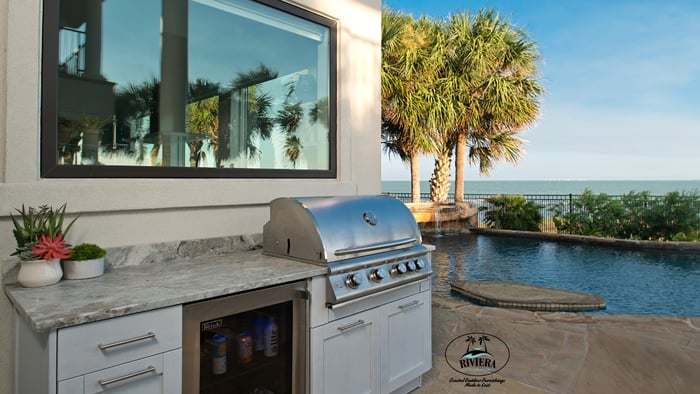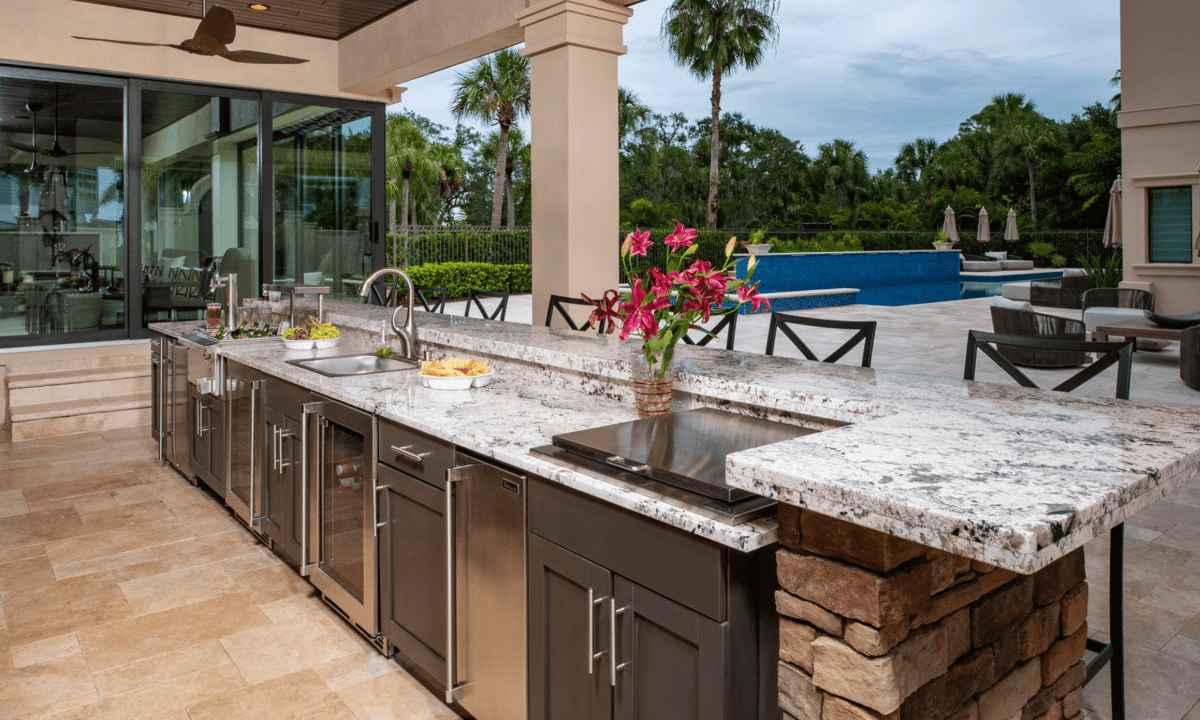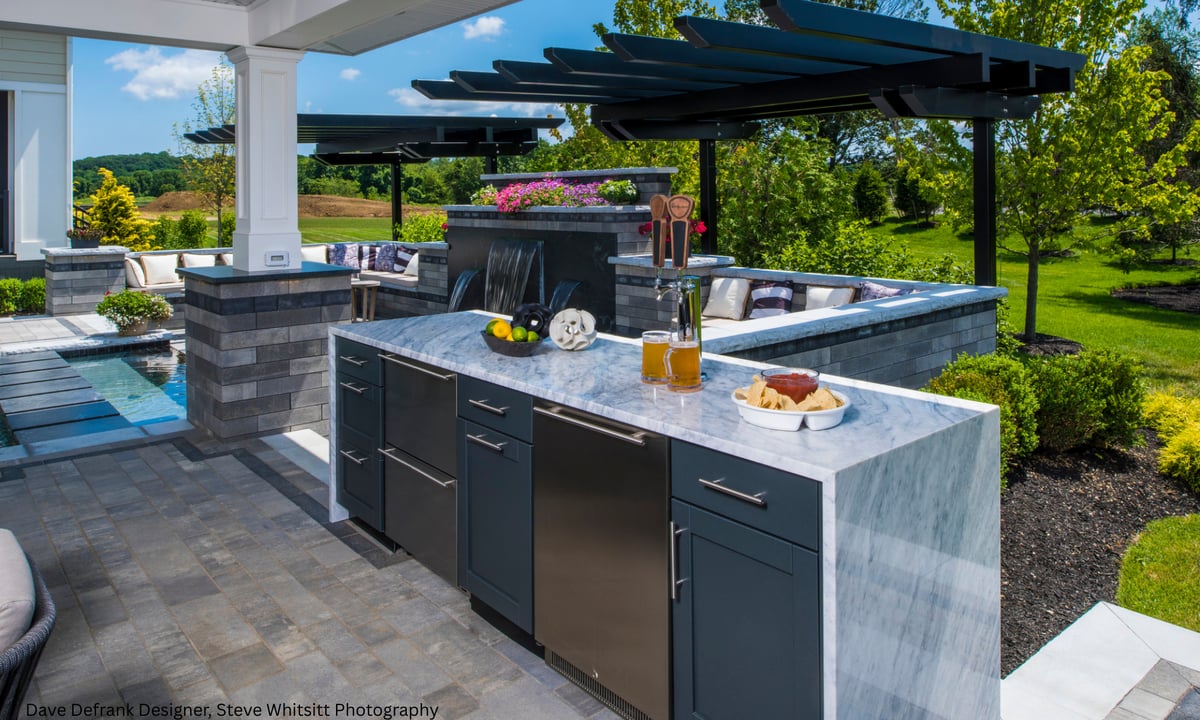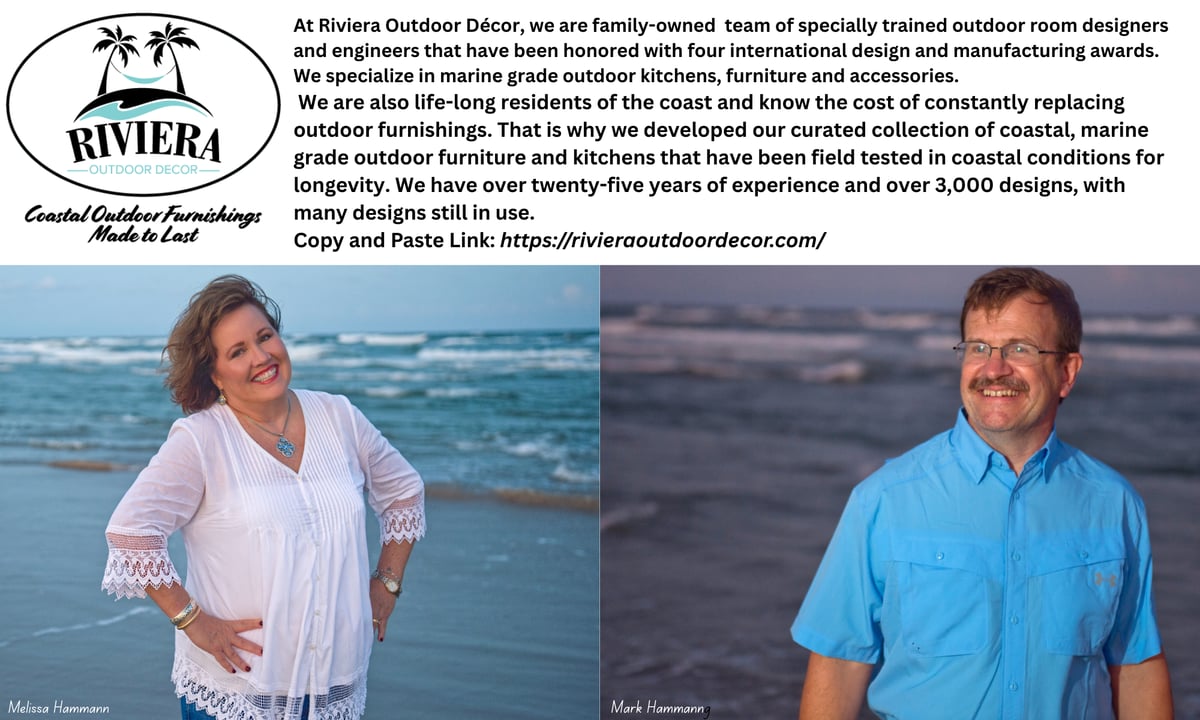Your Cart is Empty

Outdoor Refrigerator selection may sound like a simple task in designing an outdoor kitchen for a coastal property. However, it is one that involves more careful consideration than you would think - especially for coastal areas. The harsh coastal conditions demand outdoor kitchen appliances that are not only functional but also durable to withstand corrosive coastal conditions. Selection involves not only the coastal environment but the location of the outdoor refrigerator relative to a salt water pool as well.
One must remember not all refrigerators are created equal. Selecting the right outdoor refrigerator requires careful consideration of several factors. These include the appliance's ability to withstand the elements, energy efficiency, and the specific needs of your outdoor space and use, especially that of food safety.
This guide aims to help you navigate these considerations. We'll delve into the key differences between indoor and outdoor refrigerators, discuss the importance of materials and weatherproofing, and explore various features that can enhance your outdoor kitchen experience.
By the end of this guide, you'll be equipped with the knowledge to choose an outdoor refrigerator that not only meets your needs but also withstands the test of time in a coastal environment.
Let's get started on your journey to creating a beautiful and functional outdoor kitchen.
 Marine Grade Outdoor Refrigerator with Glass front shown in picture above
Marine Grade Outdoor Refrigerator with Glass front shown in picture aboveAn outdoor refrigerator enhances your coastal living by keeping cold drinks and fresh ingredients close at hand. It's more than convenience; it maximizes entertainment and leisure time outdoors.
Standard indoor refrigerators aren't built for outdoor conditions. Extreme temperatures and humidity can hinder their performance, leading to higher energy use and maintenance issues.
Outdoor refrigerators, however, are specifically designed for these challenges. They maintain consistent cooling despite weather changes, making them essential for a fully functional outdoor kitchen in a coastal setting. This reliability ensures your gatherings continue seamlessly regardless of the weather, and all food stored in the refrigerator remains at the right temperature continuously.
Outdoor refrigerators differ vastly from their indoor counterparts, primarily in construction. They're made with robust materials designed to withstand harsh conditions like humidity and salty air.
Indoor models lack the necessary weatherproofing, making them prone to rust and inefficiency outdoors. Outdoor fridges are usually built with 304 or 316 stainless steel, which resists rust and corrosion and maintains integrity year-round. The better outdoor fridges will have E-coated condensers that add durability to the refrigeration system for the most extreme conditions.
Additional differences include enhanced insulation and improved ventilation. These features ensure consistent cooling and prevent energy loss, crucial in managing fluctuating outdoor temperatures and maintaining food safety. They are designed to be both durable and efficient.
When designing for coastal environments, selecting the right materials for your outdoor fridge is crucial. Stainless steel is a popular choice due to its robust resistance to rust and corrosion.
Look for outdoor fridge models specifically labeled as coastal, marine-grade (316) stainless steel. This type is treated to endure salty air and prevent deterioration over time, an essential feature for coastal homes for optimal corrosion resistance food and beverage storage safety. In addition, look for upgraded 18-8 stainless steel and zinc plated fasteners, to ensure rust will not form in an attachment zone. Another feature that you will want in your coastal, high humidity area is an anti-condensation system that eliminates condensation from forming on the cabinet in high-humidity environments.
In addition to stainless steel, ensure any plastic components are UV-resistant. The sun can be relentless by the coast, so UV-resistant materials prolong the life of your fridge and keep it looking pristine. Choosing the right materials makes your investment last longer.
Outdoor refrigerators require effective weatherproofing to function efficiently. Protecting the appliance from moisture, dust, and extreme temperatures is crucial.
A weatherproof design should include seals and gaskets to keep out rain and humidity. These features prevent internal moisture buildup, which can compromise performance.
Insulation plays a vital role in maintaining consistent temperatures. Quality insulation ensures your fridge operates efficiently, minimizing energy use. Well-insulated models protect food safety and reduce the risk of spoilage, which is especially important in fluctuating coastal climates.
A critical component to look for in a refrigerator for food safety is E-coated condensers that add durability to the refrigeration system in the most extreme conditions.
Choosing an outdoor kitchen fridge that matches your patio's design is crucial. Consider the color and finish that complement your existing décor. Stainless steel is a popular choice for its sleek look and durability. A glass front refrigerator adds a nice touch with matching trim to your cabinets. A two-door outdoor refrigerator is another option if you wish to divide the contents of your outdoor refrigerator. The pull out drawers can also come with custom panels to match your outdoor kitchen cabinets.
If you elect for a high-end finish to your outdoor kitchen cabinets, the seamless look of custom panels can add just the right finish.
 Outdoor Refrigerator with Two Drawers, Stainless Steel
Outdoor Refrigerator with Two Drawers, Stainless SteelEnergy efficiency is a key consideration for outdoor refrigerators, impacting both environmental and financial aspects. Choosing an energy-efficient model helps reduce your carbon footprint, aligning with eco-friendly living.
Critical to outdoor fridge performance is 1000BTU/hr capacity, delivering the industry's most energy-efficient cool down.
Look for an outdoor fridge with energy star ratings to ensure lower power consumption. These models are designed to perform optimally with less electricity, saving on utility bills. Efficient refrigerators also maintain consistent cooling, preserving food safety and quality despite outdoor temperature changes.
Opt for features like advanced cooling systems and precise thermostats contribute to maintaining desired temperatures efficiently. This reduces waste and improves the overall sustainability of your outdoor kitchen space.
Deciding between a built-in and a freestanding fridge depends on your kitchen layout and personal needs. Built-in units offer a seamless look, integrating smoothly with cabinetry. They are perfect for a polished outdoor kitchen design. They are also ideal for permanent setups where aesthetics are a priority.
In contrast, freestanding refrigerators can ruin the aesthetics of your outdoor kitchen and you will find them in your way quite frequently.
Salty air is notorious for accelerating corrosion, especially in coastal regions. Therefore, choosing an outdoor refrigerator with corrosion-resistant materials is crucial. Stainless steel, with its anti-corrosive properties, is often the best choice.
Alongside picking suitable materials, regular maintenance is key to longevity. Cleaning the refrigerator's exterior and rinsing off salt deposits can mitigate corrosion. Implementing a simple routine like this can extend the life of your appliance significantly.
Additionally, periodic inspections can prevent minor issues from escalating. Look for rust or worn seals, and address them promptly. This proactive approach ensures your outdoor refrigerator withstands even the harshest coastal conditions.
Choosing the right capacity for your outdoor fridge is essential. Consider how much storage you need based on your entertaining habits. A larger capacity is ideal for frequent large gatherings, whereas a compact model suits smaller events.
Space availability also influences your decision. Measure the designated area carefully to ensure a good fit. Moreover, keep in mind any future expansions or changes in your outdoor kitchen layout. This foresight will help maintain a seamless outdoor space, even as your needs evolve.
When selecting an outdoor fridge, consider features that enhance usability. Adjustable shelving allows you to store a variety of items securely. This flexibility is particularly useful during gatherings with diverse food and drink requirements.
Smart functionality can also be a valuable addition. Some refrigerators offer digital controls and connectivity. These options let you monitor and adjust temperatures remotely, providing ease and peace of mind.
Proper installation is crucial to maximize your refrigerator's efficiency and lifespan. Ensure a stable, level surface to prevent operational issues. Uneven placement can affect cooling and cause unnecessary strain on the components.
Ventilation is another key consideration in your outdoor kitchen design. Ensure the area around the fridge is well ventilated to prevent overheating. Adequate airflow helps maintain consistent temperatures and promotes the appliance's longevity.
When purchasing outdoor refrigerators, a strong warranty is essential. The best outdoor refrigerators carry a six-year warranty. It offers peace of mind and protection against potential defects. Look for warranties that cover both parts and labor to ensure thorough coverage.
Equally important is robust customer support from the manufacturer. Reliable support can assist with troubleshooting and repairs. Investing in brands known for excellent service ensures long-term satisfaction and performance.
In summary, selecting the right outdoor refrigerators involves balancing durability, functionality, and style. Prioritize features that withstand coastal environments to ensure longevity.
Through thoughtful selection and integration, your outdoor kitchen can be a beautiful extension of your home. With the right choices, it will serve as a welcoming space for family and friends.
